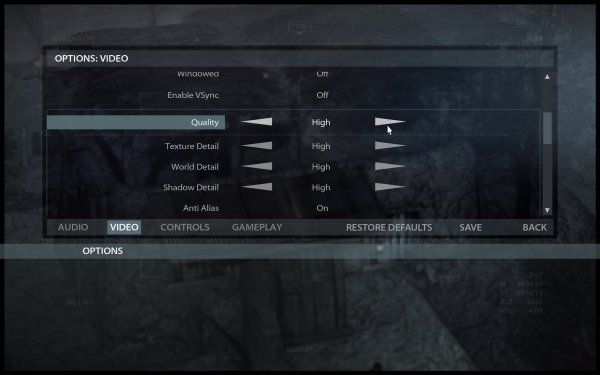Testing Methodology
We tested 17 graphics card configurations in Medal of Honor, using ATI and Nvidia GPUs that ranged from the uber expensive models to budget-minded offerings. The latest official drivers were used for all graphics cards.
MoH has been out for just a couple of days and it seems graphics card manufacturers haven't had the chance to optimize or fix glaring bugs just yet. We had problems getting SLI and Crossfire working properly, and anti-aliasing is also broken on the single player campaign despite having the option to enable it in-game. We tried forcing AA at the driver level or renaming the executable, which gave us mixed results.
We used Fraps to measure frame rates during a recorded minute of gameplay from the first level. An Intel Core i7 920 processor was overclocked to 3.70GHz in an attempt to remove any CPU bottlenecks that could influence high-end graphics cards scores.
Also, we understand many of you like to have CPU scaling performance included along with graphics, so we clocked our Core i7 processor at a range of frequencies to see how it affects performance. We also ran similar tests using a range of processors from both AMD and Intel product lines.
We will be looking for an average of 60fps for stutter-free gameplay on Medal of Honor.
|
Test System Specs - Intel Core i7 920 (Overclocked @ 3.70GHz) - x3 2GB G.Skill DDR3 PC3-12800 (CAS 9-9-9-24) - Asus P6T Deluxe (Intel X58) - OCZ GameXStream (700W) - Seagate 500GB 7200RPM (Serial ATA300) - Radeon HD 5870 (1GB) - Radeon HD 5850 (1GB) - Radeon HD 5830 (1GB) - Radeon HD 5770 (1GB) - Radeon HD 5670 (512MB) - Radeon HD 4890 (1GB) - Radeon HD 4850 (1GB) - GeForce GTX 480 (1536MB) - GeForce GTX 470 (1280MB) - GeForce GTX 460 (1GB) - GeForce GTX 285 (1GB) - GeForce GTX 275 (896MB) - GeForce GTX 260 (896MB) - GeForce GTS 450 (1GB) - GeForce 9800 GT (512MB) - GeForce GT 430 (1GB) - GeForce GT 240 (512MB) Software - Microsoft Windows 7 Ultimate 64-bit - Nvidia Forceware 258.96 - ATI Catalyst 10.9 |


